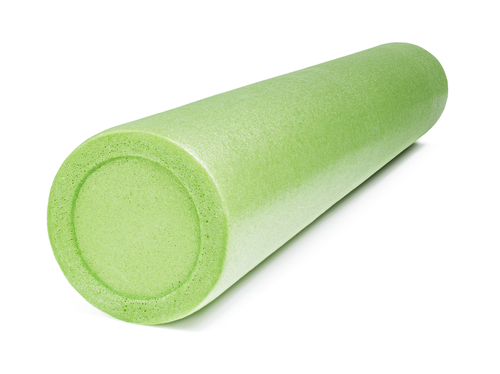Why You Need Roller Foam For Your Sore, Aching Muscles
Exercise is supposed to be good for you right? At least that’s…

Exercise is supposed to be good for you right? At least that’s what they always say. So why does it hurt so much sometimes? And, when it does hurt, don’t you wish you could just go for a quick massage to work away those pains? What about your muscles which seem constantly tense as a result of your desk job? Just a little rub would do the trick, wouldn’t it?
That is exactly what the foam roller does, and you can do it yourself. Better still, foam rollers are designed for use anywhere – at the gym, at home, and even at the office (if you can find a quiet corner).
Roller Foam – Just the Latest Craze?
Roller foam may be hot in the health circuit at the moment, but it is hardly new. In fact, it is based on an ancient medical massage, called myofascial release. You may know this practice better as deep-tissue massage, which forms a big part of any sports massage. Myofascial treatments work to release tense and knotted muscles.
When you visit a massage therapist, they release tension by pressing on sore muscles with their elbows and hands until the muscle releases. Self-myofascial release is the same, except you do it to yourself.
Now, it is a little difficult for most people to really massage their own muscles the way they need to be worked. With roller foam, you can use your body weight to create the pressure required to release knotted muscles in your back, arms, legs and more.
Prevention Beats Cure Every Time
Roller foam does more than massage aching muscles. It also works to prevent muscle pain and strain during your workout. Adding your roller foam to your stretching routine can warm your muscles. Working out with it also leads to increased balance and core stability.
Choosing a Foam Roller
Foam rollers vary widely. The size of the area you plan to work determines the diameter of roller that you will want to purchase. There are also different shapes that you may want to consider, such as a half circle that will rest flat on the floor, keeping it in place while you work on that area. Foam textures and densities also differ.
If you have never used foam rollers before, it is usually a good idea to start with a softer roll. A solid roller may cause a little pain at first. If you have the opportunity to try out a roller or two before you buy, take it

Ready to get rid of your pain and release all those knots? Grab your roller foam and get working.
Foam Roller Exercises
Quick Tips – Roller exercises work so much better when your muscles are soft and warm. Take time to stretch your muscles and warm-up before getting into these massage techniques. 5 minutes is all it will take to get you ready. When doing these, or any roller foam exercise, move back and forth on the target muscle for about 30 seconds, then move on to the other side. If you reach a spot that is particularly tender hold the roller in place at that point for about 30 seconds, until the pain subsides and then continue with your routine.
And, as with any exercise, do not forget to breathe as you work.
- Upper Back – Lie on your back with your roller underneath your shoulder blades. Bend your knees so you can rest the bottoms of your feet flat on the floor. Cross your arms over your chest and lift your bum off the ground. Move slowly so the roller moves between the middle of your back and the top of your shoulder blades. Make sure you keep your head in line with your back as you roll, otherwise you could add extra stress to your back and neck muscles.
- Quadriceps – Lie face down on the floor and position the roller under your thighs. Bend your elbows and lift yourself on to your forearms which will support your upper body weight. Keep your feet suspended avove the ground. Keep your abs tight as you use your forearms to roll the foam from the top of your knees to the bottom of your pelvis.
- Glutes – Sit on the floor with your legs straight in front of you. Lift yourself with your arms and work the roller under one side of your bum. Bend the other leg so that the side with the roller bears your weight. Roll back and forth on the foam using your arms to move. Keep in mind that you will not be making big motions. Repeat on the other side.
- Calves – Remain seated on the floor, moving the roller foam underneath your calves. Place your arms behind you. Lift your body so that your weight is balanced between your hands and the roller foam. Use your arms to move back and forth. If your legs are particularly tight, try stacking your legs for greater intensity.
